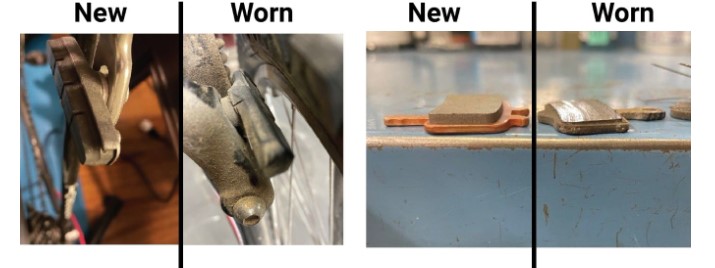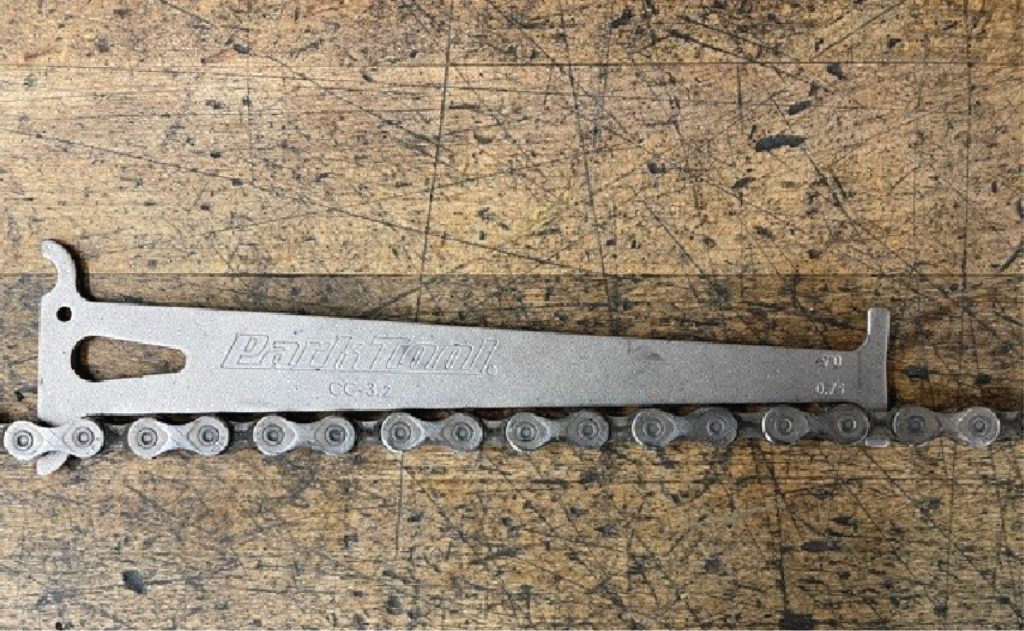The following is the guest post for the month of April by another member of the Bicyclincoln board of directors. Andy is board president.
With spring in full swing, there no time like the present to get your bike rolling in tip top shape. Like all machines, bikes have parts that wear out, it’s important to know what to replace and when, in order to avoid more costly repairs down the road. Here’s a list of the 10 parts you might need to replace on your bike.
#10 Bearings $-$$$ Is your bike making a weird noise? Do you hear a click every pedal revolution? Does your headset feel chunky? Odds are you’ve got a bearing problem somewhere. The solution may be a simple preload adjustment, but often times new bearings are in order, epically on newer ‘press fit’ style bottom brackets. You can prolong the life of you bearings by avoiding wet and grimy conditions, not using high pressure water when cleaning, and not riding on loose bearings (there should be no side-to-side play in you hubs, bottom bracket or headset).
#9 Computer Batteries $ Bike computers run on batteries. Most of which are not rechargeable. If you notice your bike computer looking a bit dim, it’s probably time for new battery. The hardest part of this at-home repair is resetting your computer. If you run into problems, the internet is your best friend. With a bit of internet research, you should be able to find instructions for your computer fairly easily (interpreting those instructions on the other hand is another story). If you don’t want to deal with the hassle, your local bike shop will be happy to sell you a battery and get you reset for a nominal fee.
#8 Cables $-$$ New cables and housing will work wonders on a poorly shifting or braking bike. Over time, all kinds of energy drinks, bodily fluids, and weather cause shift and brake cables to rust and corrode. This increases friction in the system and degrades shifting and breaking performance. Cables are one replacement part where it pays to get the nicer stuff. In general, the nicer cables and housing run smother and have less compression which leads to crisper shifting and more responsive breaking.
#7 Brake Fluid/Suspension Seals $$-$$$$ This doesn’t apply to all bikes but it’s important to maintain a proper maintenance schedule on hydraulic brakes, and suspension. It is recommended to bleed hydraulic brakes every 6 months or whenever the fluid is dirty. This is especially important with brakes that use mineral oil as it will tend to absorb water from the atmosphere over time, which leads to poor braking. In reality, a six-month brake bleed schedule isn’t practical or always needed but it is a good idea to inspect your hydraulic brakes regularly, especially if they start to feel spongy. Regarding suspension work, It’s recommended that you look up your particular fork and have it serviced according to the manufacture’s guidelines. Most forks should have some sort of service every 50-100 hours of riding, which usually translates to once a year. Can you stretch that longer? Sure, but an annual fork service is a heck of a lot cheaper than replacing the whole thing after a few years of neglect.
#6 Grips/Tape $-$$ Few bike components will make your ride feel like new more than fresh grips or bar tape. Over time, the padding and gripability (I’m not 100% sure that’s even a word) of bike grips and bar tape will degrade. Not only are old grips and raggedy bar tape gross, they can also lead to hand and arm pain on long rides. The nice thing is that grips and tape are relatively inexpensive and there are literally hundreds of options to choose from, which means not only can you make your ride more comfortable, you can also express your own bit of personal style.
#5 Brake Pads $-$$ The condition of a bike’s brake pads has a direct correlation to overall safety so it’s important to stay on top of things here. Regularly check to see that there is ample material on both disc brake pads and rim brake pads. The pictures below show examples of what to look for when inspecting brake pads.

#4 Spokes $-$$$ Broken spokes can be extremely frustrating and can be the beginning of an ongoing wheel problem so it’s important, if at all possible, not to ride on a wheel with a broken spoke. In general, the strongest wheels are those with uniform spoke tension. When a spoke breaks, the tension it was holding gets distributed to the other spokes in the wheel. Over time, that redistribution of tension causes some spokes to experience more load than others thus causing more broken spokes. If spokes continue to break and be replaced, it can become more and more difficult to achieve both a round wheel and even spoke tension which then exacerbates the problem leading to more broken spokes. If you are having issues with spoke repeatedly breaking, it might be time to look into replacing your wheel as it will save money in the long run. The best way to avoid breaking spokes is to have your wheels trued regularly (usually part of an annual tune-up), and to avoid riding off curbs or over pot holes.
#3 Chain/Cassette $-$$$$ A bike chain can be expect to last 1500-2000 miles before it should be replaced (depending on riding conditions and maintenance of course). A chain is made up of a series of plates connected by pins. Over time, the holes where those pins connect elongate ever-so-slightly due the forces applied to the chain while riding. This in essence, causes the chain to stretch. That chain stretch causes wear to your cassette and chain rings over time. A general rule of thumb is if a chain is between .75% and 1% stretched, you can generally get by with replacing just your chain. However, if a chain is stretched beyond 1%, you most likely will need to replace the cassette as well. This is because, a worn cassette will not cleanly interface with a new chain causing the chain to slip gears. There are a number of inexpensive tools like the one below that are designed to measure a chain’s stretch.

There are a couple of schools of thought when it comes to chain replacement. Some folks like to stay ahead of things and replace their chains regularly, thus getting 2 to 3 chains out of one cassette. Others prefer to ride their parts until everything is worn and replace both chain and cassette at one time. The downside to waiting is that worn chains don’t generally shift as well and if you wait too long you run the risk of also wearing out chain rings and derailleur pullies, which is another expense.
#2 Tires $$-$$$ There are a few things to look for when assessing wear on a tire. You first want to look at the tread itself. On a road tire, you might notice squared shoulders, and on an off-road or gravel tire you should look for warn knobs. This is an indication that your tires are becoming thin, losing traction, and will be more susceptible to punctures and blowouts. Also, if you notice any cracking in the sidewalls, exposed threads, or other deformities you should replace your tires as soon as possible as these are precursors to catastrophic failure. There are a number of tire options available in all price ranges. Generally speaking, it’s better to get a higher quality tire with some puncture protection than spend time and money replacing or patching tubes.
#1 Tubes/Sealant $-$$ The #1 replacement bike part is of course, the tube. Flat tires are unavoidable. If you ride long enough you’re bound to get a flat, so it’s a great idea to stock up on extra tubes and learn how to change a flat. If you don’t know how, YouTube is a great resource for tube change and other basic maintenance tutorials and many local bike shops would be glad to demonstrate the process for you if you ask. Other accessories that everyone who rides bikes should have include a patch kit, tire levers, and a portable pump or CO2 cartridges. If you are running a tubeless setup, it’s important to refresh you sealant every six months or so. Tubeless sealant is usually made up of latex, which dries over time, making it less effective at stopping air leaks. In conclusion, the most important thing you can do to extend the life of your bike and minimize expensive repairs, and have an all-around better time, is to keep your ride clean and lubricated, and maintain a regular service schedule.
